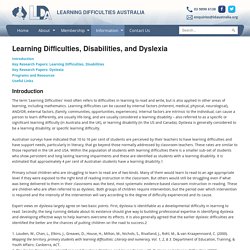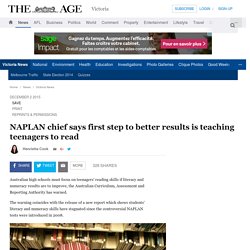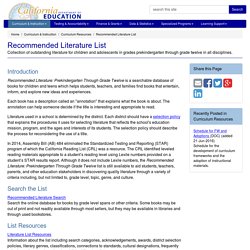

Theories of Reading. The traditional view The cognitive view The metacognitive view Conclusion Just like teaching methodology, reading theories have had their shifts and transitions.

Starting from the traditional view which focused on the printed form of a text and moving to the cognitive view that enhanced the role of background knowledge in addition to what appeared on the printed page, they ultimately culminated in the metacognitive view which is now in vogue. It is based on the control and manipulation that a reader can have on the act of comprehending a text. The traditional view According to Dole et al. (1991), in the traditional view of reading, novice readers acquire a set of hierarchically ordered sub-skills that sequentially build toward comprehension ability.
Having mastered these skills, readers are viewed as experts who comprehend what they read. Readers are passive recipients of information in the text. The cognitive view The 'top-down' model is in direct opposition to the 'bottom-up' model. Learning Difficulties & Disabilities Australia. IntroductionKey Research Papers: Learning Difficulties, DisabilitiesKey Research Papers: DyslexiaPrograms and ResourcesUseful Links Introduction The term 'Learning Difficulties' most often refers to difficulties in learning to read and write, but is also applied in other areas of learning, including mathematics.

Learning difficulties can be caused by internal factors (inherent, medical, physical, neurological), AND/OR, external factors, (family, communities, opportunities, experiences). Internal factors are intrinsic to the individual, can cause a person to learn differently, are usually life-long, and are usually considered a learning disability – also referred to as a specific or significant learning difficulty (in Australia and the UK), or learning disability (in the US and Canada).
Dyslexia is generally considered to be a learning disability, or specific learning difficulty. Primary school children who are struggling to learn to read are of two kinds. 1. Back to Top Key Research Papers. National Network of Libraries of Medicine. Originally produced by Penny Glassman, Head, Technology Initiatives, Lamar Soutter Library, University of Massachusetts Medical School, former NN/LM New England Region Technology Coordinator Health Literacy is defined in the Institute of Medicine report, Health Literacy: A Prescription to End Confusion, (link is external) as "the degree to which individuals have the capacity to obtain, process, and understand basic health information and services needed to make appropriate health decisions.

" More recent definitions focus on specific skills needed to navigate the health care system and the importance of clear communication between health care providers and their patients. Both health care providers and patients play important roles in health literacy. Stages of Reading Development. NAPLAN Chief - The First step to Better Results. Australian high schools must focus on teenagers' reading skills if literacy and numeracy results are to improve, the Australian Curriculum, Assessment and Reporting Authority has warned.

The warning coincides with the release of a new report which shows students' literacy and numeracy skills have stagnated since the controversial NAPLAN tests were introduced in 2008. "We need to be checking to make sure there is emphasis on not just reading to learn but learning to read as we get to higher year levels," ACARA general manager, assessment and reporting, Stanley Rabinowitz said. He said the focus on reading instruction in primary school was paying off, but this needed to continue into high school. "The assumption is that because we think they are reading, we don't have to do reading instruction in years 7 and 9," he said. There were also increases in Indigenous student reading performance in Years 5 and 7. "Most schools don't have good reading programs in place for kids after they turn eight. Comparison of Native and Non-native speakers of English.
Reading for Children from Low-Income and Non-English-Speaking Households. Recommended Literature List. Introduction Recommended Literature: Prekindergarten Through Grade Twelve is a searchable database of books for children and teens which helps students, teachers, and families find books that entertain, inform, and explore new ideas and experiences.

Each book has a description called an "annotation" that explains what the book is about. The annotation can help someone decide if the title is interesting and appropriate to read. Literature used in a school is determined by the district. Each district should have a selection policy that explains the procedures it uses for selecting literature that reflects the school's education mission, program, and the ages and interests of its students. In 2014, Assembly Bill (AB) 484 eliminated the Standardized Testing and Reporting (STAR) program of which the California Reading List (CRL) was a resource. Search the List Recommended Literature Search Search the online database for books by grade level spans or other criteria. List Resources. The United States of Education: The Changing Demographics. The face of our nation is changing, and nowhere is the change more evident than in public school classrooms.

Just consider this: Compared with the last century, we are increasingly aging and white on the one hand and young and multi-hued on the other. More and more of us were born in other nations, speak different languages, and carry different cultural traditions with us. Our family structures are changing—many of us marry older, many of us don't marry at all. Some groups of us have many children and some groups have none or few. We have developed this guide because demographic trends have important implications for school leaders, policymakers, parents, and the community at large. Introduction Changing patterns of fertility and immigration have put the United States on a short road to a population diversity never before experienced by any nation—a population in which all races and ethnicities are part of minority groups that make up a complex whole.
We are growing older. Reading Levels in Parkes Library.